Art therapy provides people with crucial outlet for the frustrations of dementia
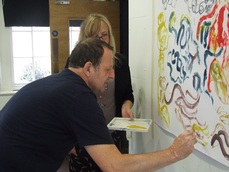
The potential of art therapy has been championed by attendees of a research project exploring the benefits of non-medical intervention for people with dementia.
One year into the 18 month project, participants have observed improved behaviour, greater communication and a discovery of previously unknown artistic talents in those with dementia as well as reduced stress levels in carers.
The Alzheimer’s Society Art Group run in the Bluecoat, Liverpool is measuring how people with dementia can use art to express themselves and its impact on their cognitive stimulation and communication skills.
The Bluecoat, a local hub for creative activities including four art galleries, has welcomed the project’s innovative research into art therapy.
Bec Fearon, head of participation at the Bluecoat, said: “At the Bluecoat, we believe that art transforms and enhances lives, and we work closely with artists to extend the boundaries of contemporary art so that we can create possibilities for individuals and communities.
“For the person with dementia, the group has provided an opportunity to channel both their frustrations and their creativity into a positive outlet. Carers have reported seeing a reduction in stress levels both during and after the sessions.
“There are also benefits for the carer themselves. It gives them the chance to talk to other people who are in the same position, but also allows them to spend quality time with the person with dementia in a safe space.
“The sessions have also unearthed artistic talents that some of the participants never knew they had, and we are encouraging them to continue to engage with the arts.”

Groups are run in community venues in Prescot and Formby where activities range from dance and music to painting and wellbeing with new creative opportunities offered every six months.
The project is one of several arts-led studies commissioned by the Alzheimer’s Society with funding from Liverpool, Knowsley and Sefton councils.
One attendee, Helena Lang, 69, cares for her husband Dave, 73 who was diagnosed with Alzheimer’s nearly six years ago.
Mrs Lang said: “The group has been a real eye opener in terms of letting us see the opportunities that we can enjoy together. A volunteer has also worked with Dave, which has given him his own bit of independence away from me. We even enjoy the anticipation of going to the group during the train trip into town. It all adds to the quality of life.”
Creator of the group, Anne-Marie Cagliarini, is locality manager for Merseyside and the Isle of Man at the Alzheimer’s Society.
She said: “We know that when we successfully engage a person with the condition in an activity it promotes awareness and increases lucidity, and that remains after the activity has ended. It is only short-lived and the extent of its effect depends on the individual, but you can see the spirits being lifted. It also makes the carer’s life a bit easier for a while. They are getting a bit of that person back.
“In order to know what will engage them, it is really important that we work with the individual to get to know them so that when they visit the group we can ensure that they have a selection of activities that are of interest to them.
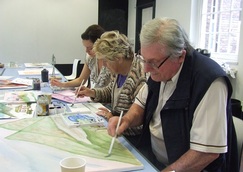
It is hoped this type of non-medical intervention could have a positive financial impact in the future if the project demonstrates how art therapy improves the quality of life for people with dementia.
Ms Cagliarini concluded: “Obviously this could have a huge financial impact on health and social services, as well as reducing the need for unnecessary hospital admissions and the use of emergency services.
“The Bluecoat is also staging a free exhibition, Anchor I and Anchor II, showcasing the work created by the groups, which will take place on September 20-21, and we would encourage people to go along and see what can be achieved by people with no prior experience of art.
“Our hope is that at the end of the pilot period we can generate enough funding for the projects to continue, because we really can’t let this go. We know it works. Obviously we would like to tweak it so people aren’t on a six-month rota but we would like to see this continue so it doesn’t just end.”
One carer explained the improvements she has seen in her husband from taking up art therapy. Pat Stranack, wife of Peter Stranack who was diagnosed with Alzheimer’s disease six years ago described how art therapy has now become part of their everyday lives.
Mrs Stranack said: “Peter went through a period of not being well. At first I gave him medicine to calm him down but it made him upset so I encouraged him to sit down and paint instead, and that relaxed him.
“It also allows him to engage with our two children and four grandchildren again, because they all sit around the table painting. It gives them something they can do with Peter, a common interest that they can enjoy together.
“It is about putting a smile on the face of this awful illness and having fun with it, and that is what has been achieved through the project.”
Mr Stranack said: “I’ve loved attending the arts project, and I’m really proud of the collage we’ve produced detailing our lives. It gives me an activity I can share with my family, which is really important to me.”
Being unable to continue the active lifestyle the couple had enjoyed was initially a worry and cause of stress for the couple, but participating in art group has helped them to cope and live with Alzheimer’s.
She said: “Over the years, Peter and I have been really active – running in 35 marathons all over the world. When Peter retired, we thought we would be able to travel all over the place and have some fun after all those years of work. But when he started forgetting things, our children and I became more and more worried about him and insisted that he go to the doctors. After lots of tests and investigations, Mossley Hill Hospital diagnosed Peter with Alzheimer’s.
“When the initial distress of the diagnosis had subsided, we decided that we would still enjoy life as much as possible, so contacted the Alzheimer’s Society to see what they had on offer. When they suggested we join some of their arts groups, we readily agreed.
“The arts group at the Bluecoat has proved a fantastic outlet for Peter. By the look on his face and in his eyes when he is engaging in the art group, you can tell that there is something going on, and the staff there have been amazing. It actually enables us to have a conversation through the painting. We also love looking around the Bluecoat itself and seeing all the fascinating exhibitions.”
Latest Features News
 28-Nov-19
2019 Election: Labour pledges £10.8 bn for free personal care while Boris Johnson sidelines social care
28-Nov-19
2019 Election: Labour pledges £10.8 bn for free personal care while Boris Johnson sidelines social care
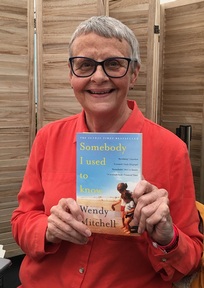 18-Oct-19
Podcast: Wendy Mitchell and dementia: 'My biggest fear is not knowing who my daughters are'
18-Oct-19
Podcast: Wendy Mitchell and dementia: 'My biggest fear is not knowing who my daughters are'
 30-Sep-19
World's oldest diver aged 96 says 'never accept the fact you are getting old'
30-Sep-19
World's oldest diver aged 96 says 'never accept the fact you are getting old'
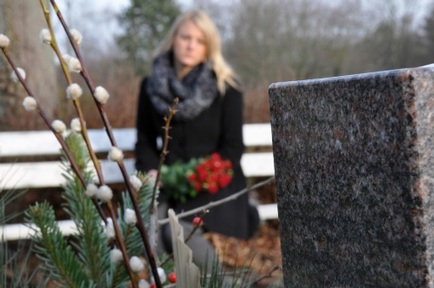 27-Sep-19
Exclusive: Care minister backs care workers' call for time off to grieve and attend funerals
27-Sep-19
Exclusive: Care minister backs care workers' call for time off to grieve and attend funerals
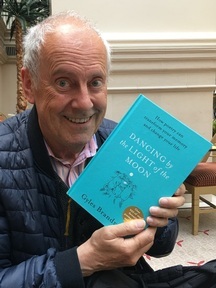 20-Sep-19
Podcast: Gyles Brandreth urges care workers to learn poetry with elderly
20-Sep-19
Podcast: Gyles Brandreth urges care workers to learn poetry with elderly